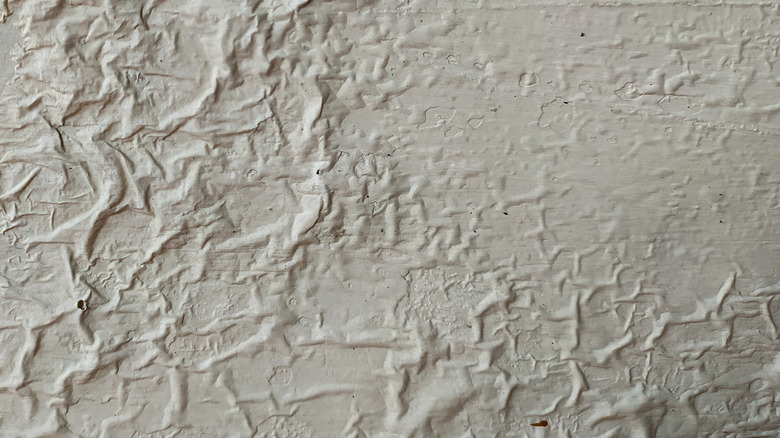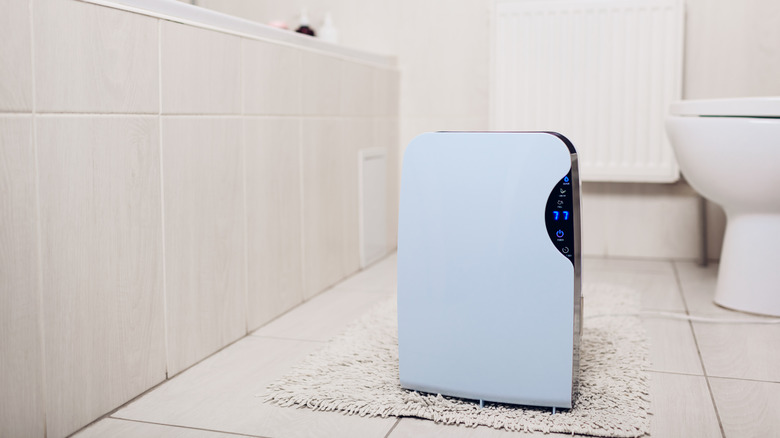The Simple Solution That'll Prevent Paint From Wrinkling
Painting the interior of your home is a gratifying process, as it requires minimal expertise and is fairly low cost as far as home improvement projects go. That being said, some skills are still needed if you want to achieve the best results, and sometimes, there are hiccups along the way, even as you try to paint your home like a professional. One such challenge that an amateur painter may run into is wrinkling paint. Instead of smoothly applied paint in your newly chosen hue, you're left with unpleasant shriveling and distortions of the paint on your walls. This can cause even the most patient of people to experience extreme frustration, so what's the solution to wrinkling paint on your walls?
The good news is that the reason your paint is wrinkling on the walls has nothing to do with your potential as a painter and everything to do with your approach. Wrinkling paint generally appears after a second coat of paint is applied on a wall. It is a telltale sign that your first coat of paint was not fully dried when the second coat went on. The way to solve this annoying problem is to allow your first coat of paint to dry completely before you even consider applying another coat. The time that's needed to wait in between coats depends on a variety of factors, but the most fundamental one to consider is what type of paint you're working with, latex or oil-based paints. As a rule of thumb, you'll want to give latex paints an hour to dry, whereas oil-based formulas will need 6-8 hours. You may be inclined to add water to your latex paint for quicker dry time, but that's not usually recommended. If in doubt, however, always refer to your particular paint's instructions.
More tips for avoiding wrinkling paint
There are additional environmental factors that can contribute to your paint wrinkling on the walls. Sometimes, the surface you are painting is not clean — it may have an accumulation of dirt, oils, or other substances that can make it difficult for your paint to get a proper grip on the surface. In this case, cleaning the wall prior to applying your first coat can solve your problem. Use a dampened sponge and a small amount of soap designed to cut grease to remove any buildup; next, remove any soapiness with a wet sponge and no soap.
Another common set of factors that can cause wrinkling paint is the moisture or humidity of a space. Air that is too damp can cause your paint to not fully or properly cure, leading in turn to wrinkling paint (even if you cleaned the walls and waited enough time between coats). If you happen to own a dehumidifier, it's recommended to run it in the room you're painting for a few hours before cracking open your can of paint. No dehumidifier? No problem; you can still naturally reduce the humidity in your space by opening windows to help dissipate indoor moisture before painting. You'll also want to avoid the common mistake of showering in a newly painted bathroom, if at all possible. If using the shower is unavoidable, keep the dehumidifier running while you shower or open a window to cut down on the amount of steam generated, and opt for a warm, short (not hot and steamy) shower. Be aware that excessive heat can slow dry time, and applying thick coats can also affect curing. Wrinkling paint can be a nuisance, but with the right approach, you can prevent it from happening.

